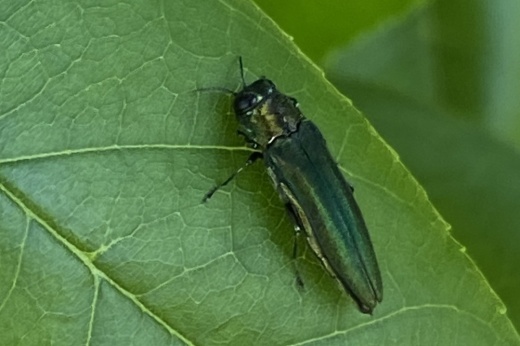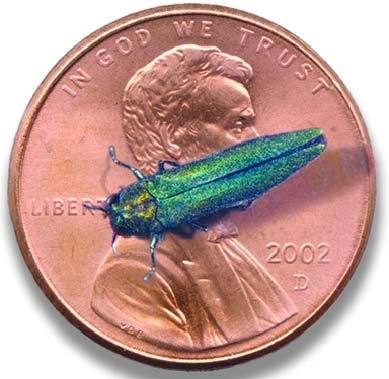The emerald ash borer was first detected at the refuge in 2018 and confirmed in December 2021, according to Fort Worth City Forester Craig Fox.
Although not all of the nature center's ash trees have been infested, the center will see a “change in the landscape, and the ash tree component will disappear,” said Allen Smith, a forest health coordinator and entomologist with the Texas A&M Forest Service.
The nature center and refuge, which spans 3,621 acres and includes over 20 miles of hiking trails, is located south of Eagle Mountain Lake in northwest Fort Worth.
The refuge is not the only location in North Texas with a confirmed infestation. The emerald ash borer has also spread to various locations in Dallas, Tarrant, Denton, Parker and Wise counties, Smith said. As of July 2022, the emerald ash borer has been detected in 11 counties in Texas, according to the Texas A&M Forest Service, which tracks the spread of the species.
There is no way to know for sure how the emerald ash borer came to these areas in Texas, Smith said, adding that it was most likely due to natural migration from Louisiana.
Infestation can happen unintentionally by transporting firewood that contains emerald ash borers, Smith said. The beetles may survive for up to two years after a tree has been cut down, according to Texas A&M Forest Service.
Ash trees infested with emerald ash borer may take about three years to die, Texas A&M Forest Service officials said.
Signs that an ash tree has been infested include thinning or fading at the top of the tree, new branches at the base, exit holes in the shape of a capital D and tunneling under the bark.
The insects are about 3/8 of an inch to 1/2 an inch in length, according to Smith. Due to their small size, the beetles are difficult to spot. By the time an emerald ash borer infestation is detected, it can be “too late to stop it,” Smith said.
Residents living within 10-15 miles from a known infestation may start injecting their ash trees with insecticide to help protect them, according to Smith.
“This is the most effective treatment,” Smith said. “Not a lot we can do to prevent it.”
Residents may report a possible infestation with the national emerald ash borer hotline at 866-322-4512.
Maya Contreras is an intern from the University of North Texas Scripps Howard Foundation Emerging Journalists program. She is a senior at Prosper High School in Prosper, where she serves as the opinion editor and lead graphic designer of Eagle Nation Online.





